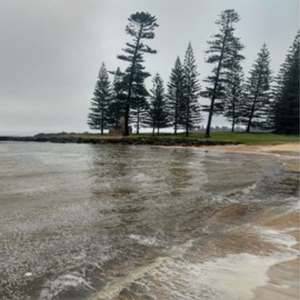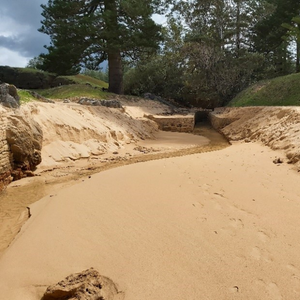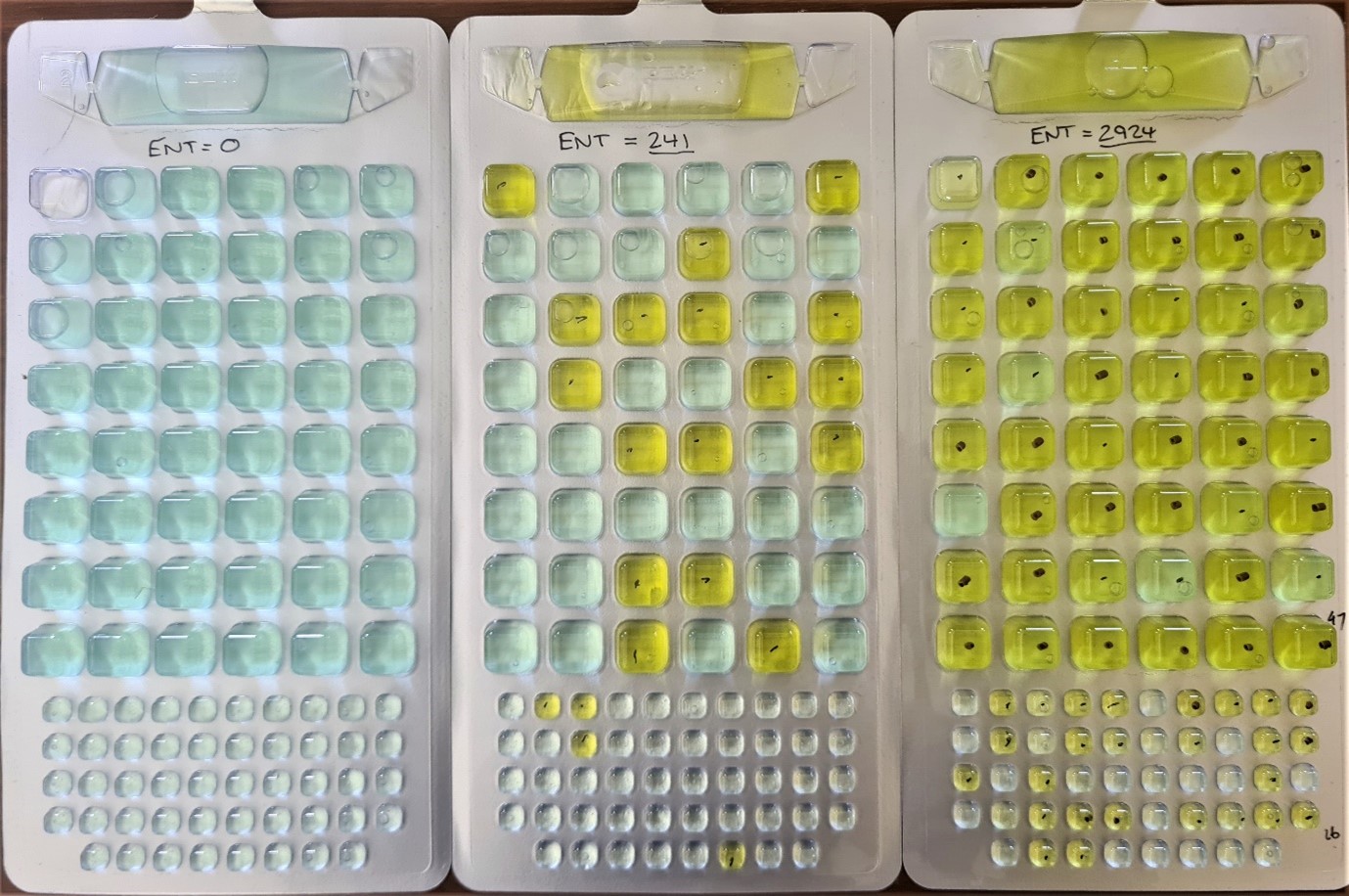Beach Water Quality Monitoring
Beach Water Quality Monitoring
See Water Quality Public Health updates on our Facebook page (link is external)
We monitor recreational water quality at Emily Bay and Slaughter Bay to assess the level of faecal pollution which occurs when contaminated stormwater flows into the ocean.
Anticipated rainfall forecasts can also be used to predict the likelihood of bacterial contamination at our beaches based on known stormwater effects.
As a general precaution, swimming at Emily Bay should be avoided after heavy rainfall or for as long as stormwater is present.
Monitoring Sites
![]()
Signs of stormwater pollution
The most obvious signs of stormwater pollution are water discolouration as well as land debris in the water and on the tide line. There is a stormwater outlet in the west end of Emily Bay that discharges during wet weather and swimming should be avoided whenever significant flow is entering the bay.

Discoloured water at Emily Bay

Emily Bay outlet

Storm water flowing at Emily Bay

Storm water flowing into ocean at Emily Bay
When samples are collected?
Samples are collected every week. If faecal bacteria contamination is detected, samples are collected daily until bacteria levels drop.
What do we test for?
We test water samples for a bacteria called enterococci. Enterococci is found in the intestines of warm-blooded animals and excreted in faeces. It is minimally present in unpolluted waters and an elevated concentration is used as an indicator for potential pollution.
Studies have shown a strong relationship between elevated levels of enterococci and illness rates in swimmers. So, to protect public health, the ongoing monitoring of enterococci is essential. Indicator organisms are used to test for sewage pollution because:
• the expected levels in unpolluted waterways are known
• they are easily detectable by simple laboratory tests
• results are reliable with a quick turn around and response time (24h).
The National Health and Medical Research Council (2008) Guidelines for Managing Risks in Recreational Waters(link is external) recommend enterococci as the single preferred indicator organism for the detection of faecal pollution.
How do we interpret the results of the tests?
The table below shows how the enterococci results are interpreted and categorised
|
Enterococci reading (MPN/100ml) |
Description |
Categorisation |
|
<41 |
Good |
Green |
|
41-200 |
Fair |
Orange |
|
201-500 |
Poor |
Orange/Red* |
|
>500 |
Bad |
Red |
*Subject to interpretation based on conditions and forecasts

Examples of Enterococcus results – Left - Green, Middle - Orange, Right - Red
What happens when contamination is detected?
When test results indicate faecal contamination, the sampling site is immediately retested and a public health warning is issued via our website and Facebook page(link is external)
